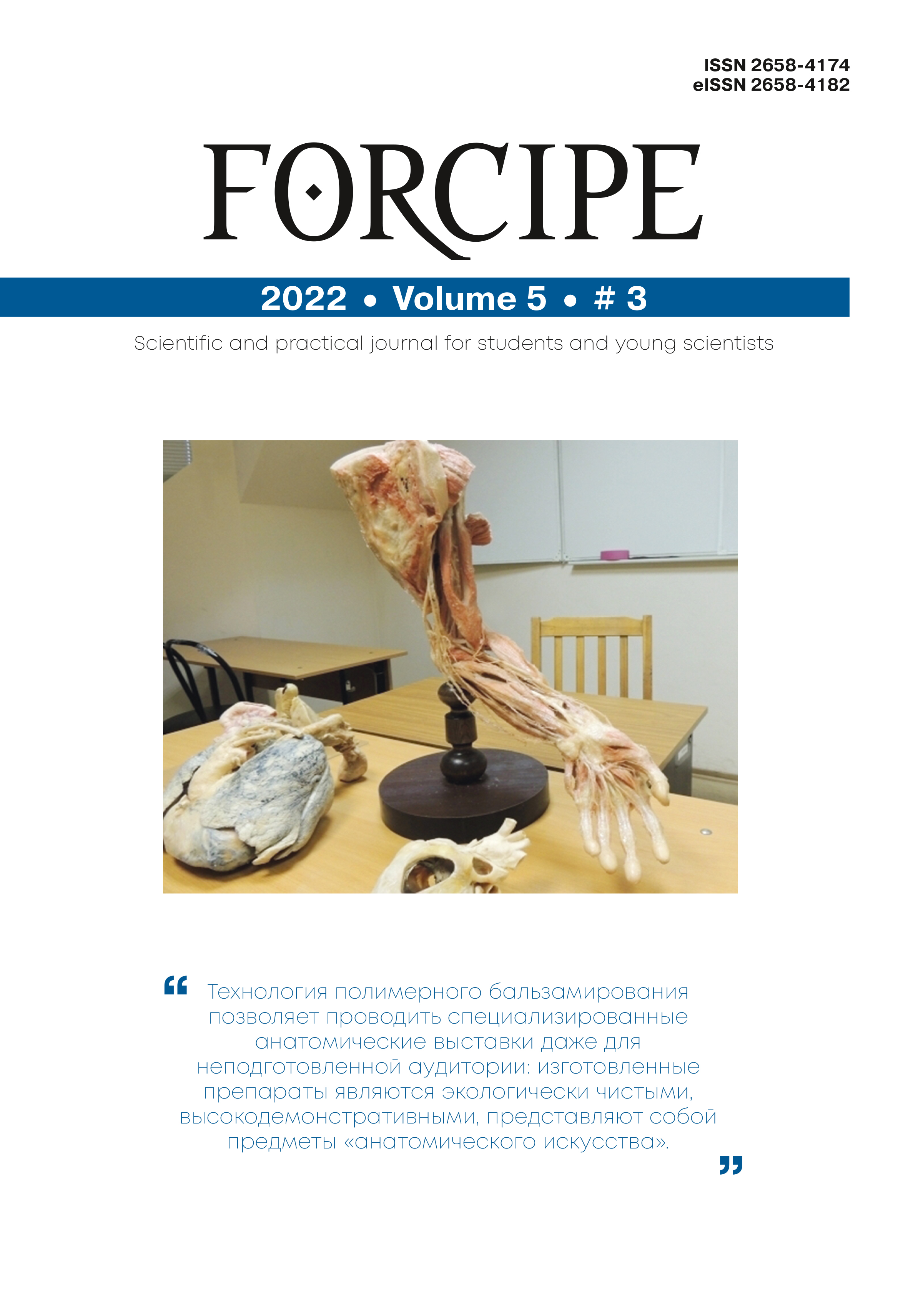SOME ASPECTS OF MORPHOMETRY OF THE HUMAN INNER EAR
Abstract
Morphological variability is a natural phenomenon affecting all anatomical systems. Morphological variability of the inner ear is associated with variability in the size and shape of the cochlea and semicircular canals. This review presents the results of scientific research in the field of cochlear - vestibular morphometry to determine the most appropriate parameters characterizing the anatomical variations of the human inner ear. Evaluation of cochlear morphology is a vital procedure before performing any surgical intervention to place a cochlear implant in a suitable candidate. Clinical 3D-imaging is an essential element in the anatomical assessment of cochlear morphometry. As a rule, among the parameters of the cochlea, which are characterized variability, include the length of the cochlear duct, the length of the outer wall of the cochlea, the diameter of the basal, middle and apical turns of the cochlea, the width of the scala tympani. Accurate knowledge of the size and spatial relationship of the semicircular canals (SCCs) is vital and can provide essential reference data for otorhinolaryngologist surgeons and otoneurologists. The spatial orientation of the semicircular canals differs from orthogonality. Synergistically acting functional canal pairs of both ears do not lie in exactly the same plane. The shape of the SCCs is approximately circular, so simple measurements of the radius of curvature should be sufficient to characterize the size of the channel. The area of the SCCs circles may also be a suitable parameter to quantify the channel size. The main variables that characterize the variability in the size of the cochlea and semicircular canals are considered. The main methods for quantitative assessment of the morphometric parameters of the inner ear are given. It is a challenging task for many clinicians to combine a series of 2D-images slices into an accurate 3D-model. A clear understanding of the 3D-anatomy of the inner ear will be an advantage to any surgeon performing complex procedure.



